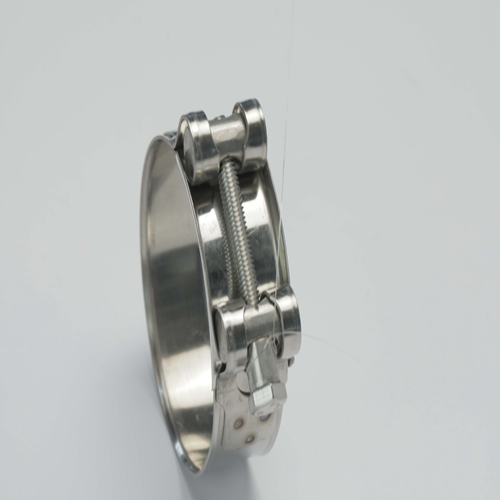- Phone:+86-17331948172 +86-0319-8862898
- E-mail: inquiry@puxingclamp.com
Aug . 17, 2024 10:05 Back to list
3 Inch Stainless Steel Hose Clamp Manufacturer for High-Quality Solutions
Understanding 3-Inch Stainless Steel Hose Clamps Insights from the Factory
In the world of industrial applications, the significance of reliable fastening solutions cannot be understated. One such vital component is the hose clamp, particularly the 3-inch stainless steel hose clamp, which is widely utilized across various sectors including automotive, aerospace, manufacturing, and plumbing. This article delves into the essential characteristics, manufacturing processes, and benefits of 3-inch stainless steel hose clamps, shedding light on what makes them a preferred choice in many applications.
The Importance of Hose Clamps
Hose clamps are mechanical devices used to attach and seal a hose onto a fitting such as a barb or nipple. They are particularly crucial in applications where a fluid transfer is essential, as they prevent leaks and ensure system integrity. Among various sizes and materials available in the market, 3-inch stainless steel hose clamps are esteemed for their durability, corrosion resistance, and adaptability to different environments.
Manufacturing Process
The manufacturing of stainless steel hose clamps involves several meticulous steps to ensure that each clamp meets quality standards and specifications. The process typically starts with selecting high-grade stainless steel, often grades 304 or 316, known for their excellent resistance to rust and oxidation.
1. Cutting and Shaping The stainless steel sheet is cut into strips, which are then shaped into the desired configuration using state-of-the-art machinery. This includes forming the clamp band, which wraps around the hose.
2. Forming the Band The cut strips are rolled and formed into circular bands. This requires precision to ensure that each band will fit securely around a 3-inch hose without slipping or damaging the hose material.
3. Adding the Screw Mechanism After the bands are formed, the next step is integrating the tightening mechanism. Typically, this involves creating holes for the screws and fitting a worm gear or a similar device that allows for easy adjustment. This screw mechanism is essential for achieving the right amount of pressure on the hose, providing a secure seal.
3 inch stainless steel hose clamp factory

4. Quality Control After assembly, each clamp undergoes rigorous quality testing. This includes checking for proper dimensions, tensile strength, and corrosion resistance. Manufacturers often employ advanced techniques such as ultrasonic testing to detect any structural flaws.
5. Finishing Touches Finally, clamps are polished and coated, if necessary, to enhance their aesthetic appeal and further boost their resistance to environmental factors.
Benefits of Stainless Steel Hose Clamps
Utilizing 3-inch stainless steel hose clamps offers numerous advantages. Key among these is their outstanding durability. Stainless steel naturally resists corrosion, making these clamps ideal for both indoor and outdoor use, especially in environments exposed to moisture or chemicals.
Another important aspect is their versatility. These clamps can be used in a wide range of applications—from automotive cooling systems to agricultural equipment, where reliable sealing is vital. Their design allows for easy installation and adjustment, which saves time and reduces labor costs.
Moreover, 3-inch stainless steel hose clamps help ensure safety in fluid transfer systems. By providing a reliable seal, they prevent leaks that could lead to hazardous situations, thus enhancing operational safety.
Conclusion
In summary, 3-inch stainless steel hose clamps are indispensable components in various industrial applications. The careful manufacturing process ensures their durability and reliability, making them a favored choice among engineers and technicians. As industries continue to evolve, the demand for high-quality fastening solutions like stainless steel hose clamps will continue to grow, ensuring that they remain at the forefront of safe and efficient operations. Investing in these clamps not only contributes to operational efficiency but also enhances overall safety and performance in fluid management systems.
-
Heavy Duty Hose Clamps: Premium Stainless Steel & Adjustable
NewsAug.19,2025
-
Large Stainless Steel Adjustable American Type Hose Clamp - Hebei Pux Alloy Technology Co., Ltd
NewsAug.18,2025
-
Large Stainless Steel Adjustable Hose Clamp - Hebei Pux Alloy|Durable Corrosion Resistance&Adjustable Design
NewsAug.18,2025
-
Large Stainless Steel Adjustable Hose Clamp - Hebei Pux Alloy Technology Co., Ltd
NewsAug.18,2025
-
American Style Adjustable Hose Clamps for Pipe & Radiator
NewsAug.18,2025
-
Large Stainless Steel Adjustable American Type Hose Clamp - Hebei Pux Alloy Technology Co., Ltd.|Corrosion Resistance, Adjustable Design
NewsAug.17,2025




